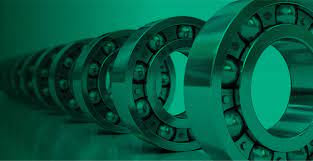R+D in the world of bearings
Research and development (R+D) is integral to the engineering industry, particularly in the field of bearings. Bearings are mechanical components that allow efficient and smooth motion in various applications, from machinery and vehicles to wind turbines and medical devices. The constantly evolving nature of modern technology means that there is a constant demand for improved bearing designs and materials, which can be achieved through innovation and extensive research.
R+D in the world of bearings aims to enhance the performance and durability of these critical components, while also reducing their environmental impact and cost of production. With the increasing complexity of mechanical systems, the challenges faced by R+D practitioners in the bearing industry have also become more diverse and demanding. They need to balance materials science, tribology, and mechanical engineering to develop products that can withstand high speeds, loads, and temperature extremes, as well as harsh environmental conditions and long periods of use without maintenance.
In this blog post, we will explore some of the latest R+D trends and innovations.
1. The Importance of Research and Development in Bearings Industry
R+D (Research and Development) is crucial for any industry, and the bearings industry is no exception. Bearings have played a significant role in machinery and equipment for centuries, and they continue to be an integral component of modern machines. The bearings industry has always been driven by innovative ideas and technological advancements. The importance of R+D in the bearings industry cannot be overstated, as it is essential for the continued growth and success of the industry. In this document, we will explore the benefits of R+D in the world of bearings and why it is vital for companies to invest in this area.
2. The Role of Technology in Advancing Bearings Technology
Technological advancements have greatly influenced the bearings industry. Research and development (R+D) have been crucial in advancing bearings technology. Through R+D, bearing manufacturers have been able to develop new materials and improve their manufacturing processes which have led to better-performing bearings that are more resistant to wear and tear. For instance, with the advent of nanotechnology, manufacturers can create bearings with enhanced lubrication capabilities, better heat resistance, and reduced friction. Furthermore, automation technologies have made it easier to manufacture bearings more consistently and accurately, leading to increased reliability and durability. One key advantage of technology in bearing manufacturing is that it has enabled manufacturers to customize bearings to meet specific application requirements resulting in a much broader range of options. In conclusion, technology will continue to shape the future of bearing manufacturing and it will play a critical role in ensuring the industry remains competitive and efficient.
3. Continuous Improvement in Materials and Manufacturing Processes
Continuous improvement in materials and manufacturing processes is critical to remain competitive in the world of bearings. As technology continues to advance, manufacturers must also evolve their processes to meet the demands of the market. In order to achieve consistent improvement in materials and production methods, it is necessary to have a deep understanding of the latest developments in materials science and manufacturing technology. By continuously assessing new materials and refining manufacturing processes, bearing manufacturers can increase the quality of their products while also reducing costs and lead times. Additionally, a focus on continuous improvement can lead to the development of new products and technologies, expanding opportunities for growth and differentiation in the market.
4. Collaborative Efforts Between Research Institutions and Bearings Manufacturers
Collaboration between research institutions and bearings manufacturers is an important aspect of advancing the technology and innovation within the industry. By combining the expertise and resources of these two entities, significant strides can be made in the development of new materials, designs, and manufacturing processes for bearings. Research institutions can provide valuable insights and knowledge related to scientific principles, while manufacturers can offer practical expertise and know-how in terms of product design and production techniques. Collaborative efforts can also help to identify new market opportunities and potential applications for bearing technology. As such, these partnerships are an essential component of R+D in the world of bearings, and we encourage continued collaboration to drive the industry forward.
5. Future Direction of Bearings R+D and Industry Trends
The future direction of bearings R+D is one that seeks to address the increasing demand for high-performance bearings that can operate in harsh and challenging environments. With the growing trend towards electrification and automation, there is a need for bearings that are reliable, energy-efficient, and able to withstand high temperatures and speeds. To achieve this, researchers are exploring new materials, such as ceramics and composites, as well as new lubrication techniques and surface coatings. Industry trends suggest that there will be a greater emphasis on sustainability, with a focus on reducing the environmental impact of manufacturing and improving the circularity of bearing products. Additionally, advancements in digital technologies such as Industry 4.0 and the Internet of Things (IoT) are expected to revolutionize the way bearings are designed, manufactured, and maintained, with a greater emphasis on data-driven optimizations and predictive maintenance. As the world of bearings continues to evolve, it is critical for researchers and industry leaders to stay ahead of these trends by investing in R+D and actively contributing to the development of more advanced and sustainable bearing technologies.
In conclusion, the advancements in bearing technology through research and development have allowed for increased functionality, efficiency, and reliability in various industries. The development of new materials, coatings, and lubrication techniques have also resulted in longer service life and reduced maintenance costs for machinery. As R&D continues to push the boundaries of what is possible, we can expect even more innovative solutions to emerge in the world of bearings, ultimately benefiting industries and consumers alike.




Megjegyzések
Megjegyzés küldése